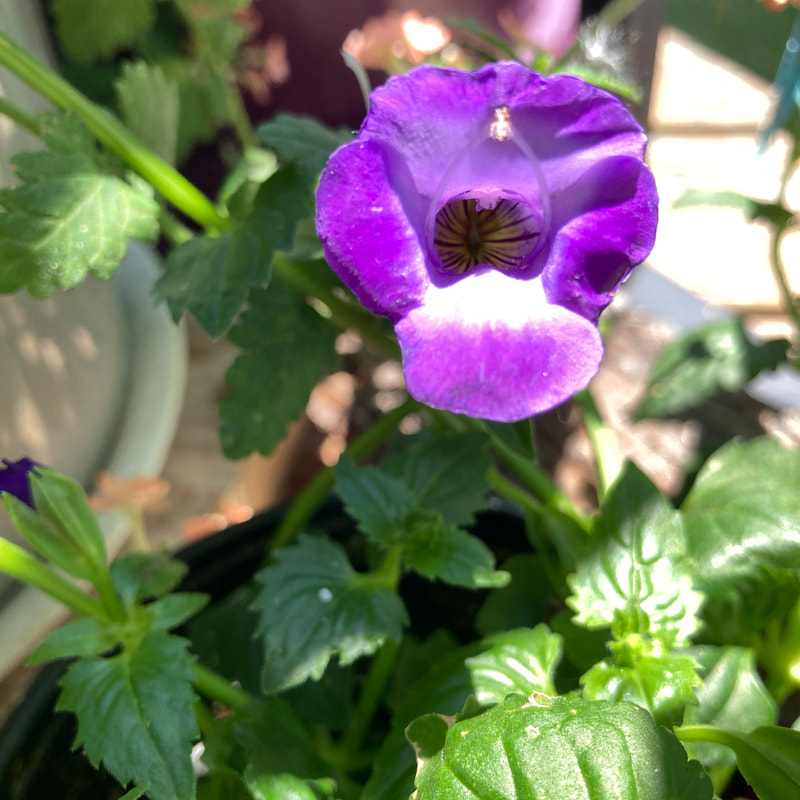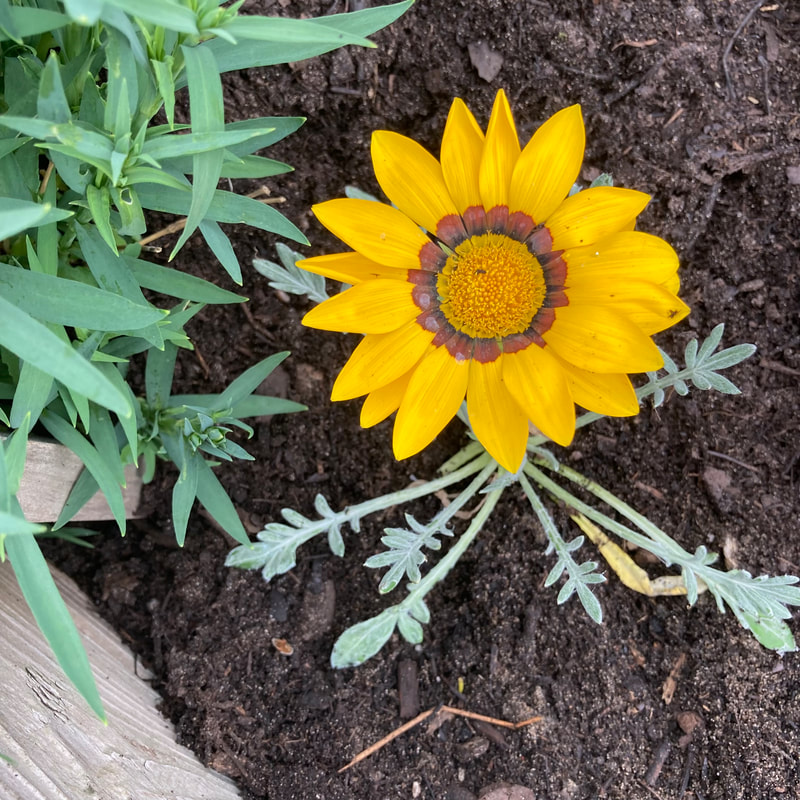|
Photo and article by Donna Iverson
The blue-purple trumpet-shaped flowers begged me to take a closer look. The plant was sitting on a table full of colorful annuals at the Zandstra Farm stand near Hudsonville. “Wishbone Wishbone” chanted the farmer behind the counter. “Look closer at the petals and you will see a small wishbone,” he said. Focusing in, I saw an upside down miniature wishbone embedded in the center of the blossom. That’s why it’s called the Wishbone plant, the farmer said. And when the flower is pollinated, the wishbone breaks, he added. Well, I had to check that out for myself. So home it came and given a sunny spot on my apartment deck. In less than a week, the largest flower had a broken wishbone. As I hadn’t seen any butterflies on the deck, I figured it must have been pollinated by one of the many bees that have been buzzing around of late. Does that bring the bee good luck, I wondered? Sort of like when breaking the turkey wishbone is thought to bring good luck to the person who ends up with the larger half? The Wishbone flower’s scientific name is Torenia fournieri and it is a native to Asia and Africa. There are trailing and upright varieties with names like Catalina Gilded Grape, White Linen, Moon Purple, and Kavia Rose. An annual, it prefers morning sun and afternoon shade and does well in rock gardens, window boxes, and along garden edges. It is not invasive or toxic to animals. Hot humid weather is to its liking. Both bees and hummingbirds will pollinate it and deer avoid it. The plant is named after a Swedish botanist, Olaf Toren, who was a chaplain in the East India Company during the 1700s. Garden tip: All warm-season plants including tomatoes, squash, peppers and melons can be safely planted in June
0 Comments
Photo and article by Donna Iverson If you want a flowering plant that:
Then be on the lookout for Gazania, commonly known as the African daisy. Every spring, I plant something that I have never grown before..something that catches my eye. This year, I spied the colorful petals of the Gazania plant at the Muskegon farmers market. Trays of these seedlings covered a counter at a stall featuring plants grown by Dianne Snow of Coopersville. Filling my basket, I carried them over to my community garden bed and carefully dug them in. My bed contains both vegetables and flowers in an effort to create a potager. A potager is a garden that is both productive, ornamental and very French. A member of the Aster family, Gazania comes in the warm colors of red, orange, yellow, pink and cream. There are also variegated varieties. It grows to about 10 inches tall with 4 inch flower heads that close at night and on cloudy days. Deadhead for continuous bloom. It is best purchased as seedlings unless you have a greenhouse or indoor sunny windowsill to grow from seed during the winter. Add it to a rock, xeriscape, or Mediterranean garden. It also grows well in pots and hanging baskets. Varieties have names like Sunbathers, Daybreak, and Kontiki Violet. Gazania is named after a Greek-Italian scholar of the 15th century named Theodorus of Gaza. On the downside, Gazania is not a native to our area but it is not invasive and although technically a perennial, it will not survive our cold winters and thus should be treated as an annual. |
Archives
July 2024
Categories |


 RSS Feed
RSS Feed